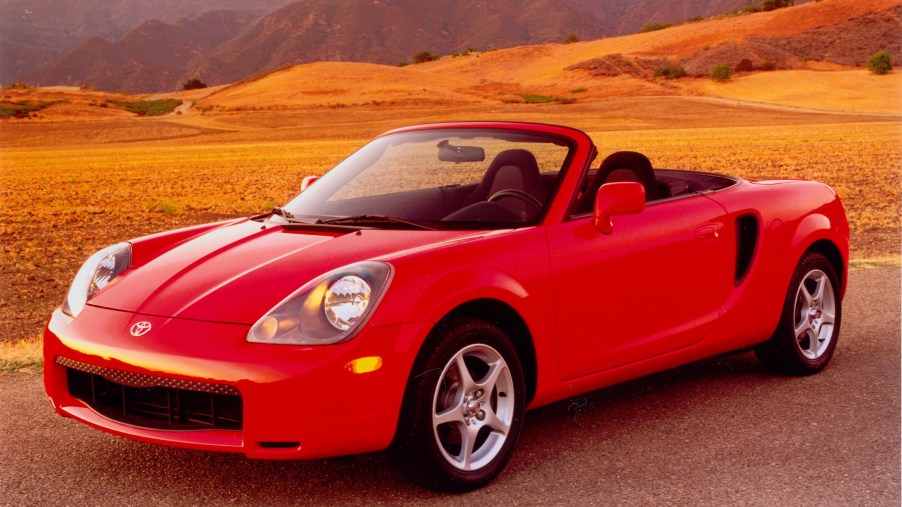
The Toyota MR2 Spyder Was the Poor Man’s Lotus Elise That No One Bought
The Toyota MR2 Spyder descended from a proud lineage of affordable and insanely fun mid-engine performance cars dating back to 1985.
Compared to the much more popular first and second-generation MR2 models, the Spyder was a focused lightweight sports car that did more with less. And we mean less—the MR2 Spyder tipped the scales at just under 2,200 lbs.
A 1.8-liter four-cylinder engine appropriated from the Toyota Corolla of that era generated a meager 140 hp, but that was ample thrust to make such a lean smile-generating machine a hoot to drive on highways and byways.
The automotive press praised the MR2 Spyder for its nimble chassis, predicable yet precise handling, and undiluted driving dynamics. In fact, many likened the Spyder to a less powerful, more affordable Lotus Elise.
Add Toyota reliability, bold styling, exemplary fuel efficiency, and a starting price tag of just $23,098, and you should have yourself a smash hit.
Unfortunately, the MR2 Spyder wasn’t the sales success you’d think it’d be.
The MR2 Spyder was a sales disaster
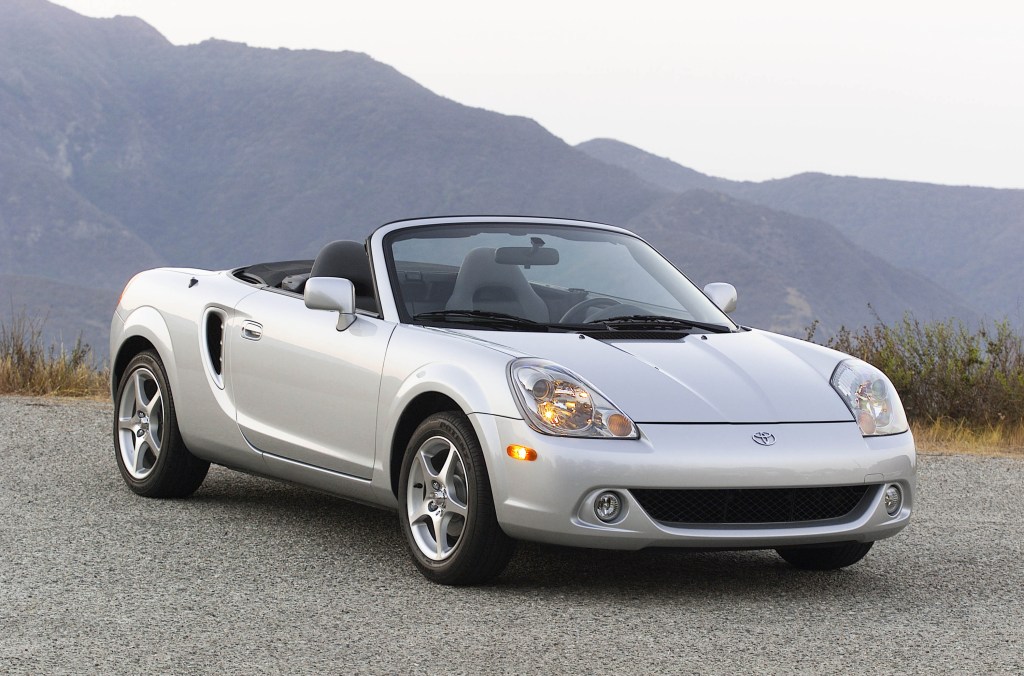
Produced from 2000 to 2005, the Toyota MR2 Spyder sold just under 25,000 units in the U.S. during its entire model run. For perspective, the Spyder’s main rival, the Mazda MX-5 Miata, sold almost 80,000 units for the same years.
So why did the MR2 Spyder sell so poorly compared to its competitor?
There are many schools of thought on this contested subject. Here are some of the most popular arguments as to why the MR2 Spyder saw dismal sales:
The MR2 Spyder was too darn impractical
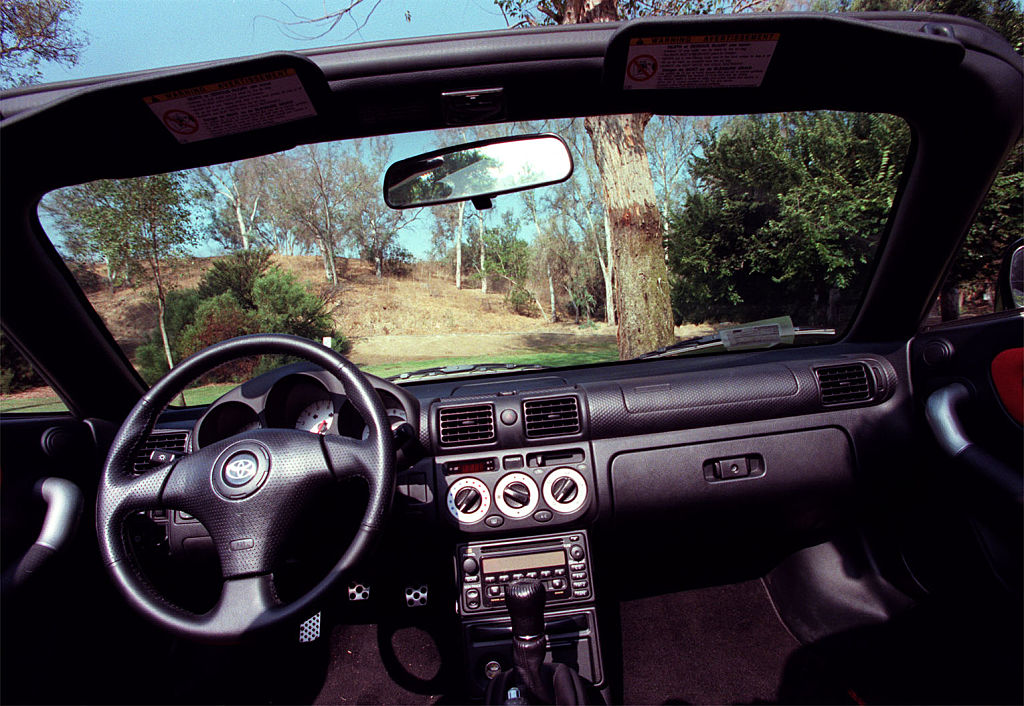
Some theorize that MR2 Spyder sales suffered because it was woefully impractical compared to the Mazda Miata. While the interior of the MR2 Spyder was slightly roomier than its rival, the Spyder offered a measly 1.9 cubic feet of cargo capacity compared to 5.1 cubic feet for the Miata. Sure, brave Spyder owners ditched the spare tire in the “frunk” (a term used to describe the front trunk found on mid-engine cars) to free up additional storage space, but the extra space was marginal at best.
The MR2 Spyder was poorly marketed
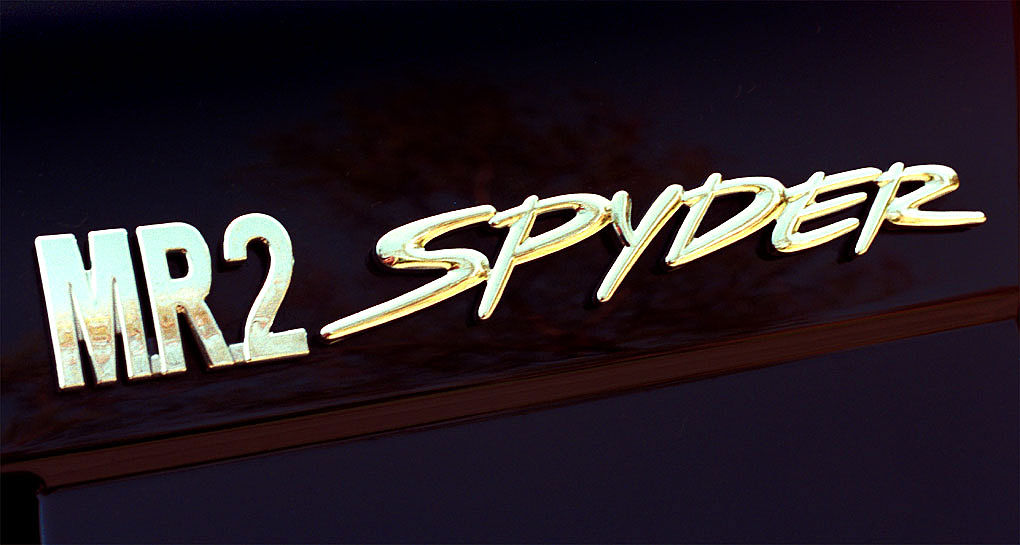
Other people suggest that Toyota really dropped the ball on successfully marketing the MR2 Spyder.
Back in the late 90s, Toyota launched Project Genesis, which was an ambitious marketing campaign aimed at attracting young buyers to the brand (think of it as the meta Scion). Project Genesis included three Toyota models: Celica, Echo, and MR2 Spyder.
Unfortunately, the MR2 Spyder was a marketing flop for a couple of reasons. Chiefly, young buyers didn’t fall in love with the small and impractical nature of the Spyder. It also didn’t help that greedy dealerships added heavy markups to the Spyder, thereby pricing it out of most young buyers’ means.
The MR2 Spyder did sell reasonably well among more mature buyers; it probably would have been wise for Toyota to shift their marketing efforts to target this more mature group.
The MR2 Spyder competed with an icon
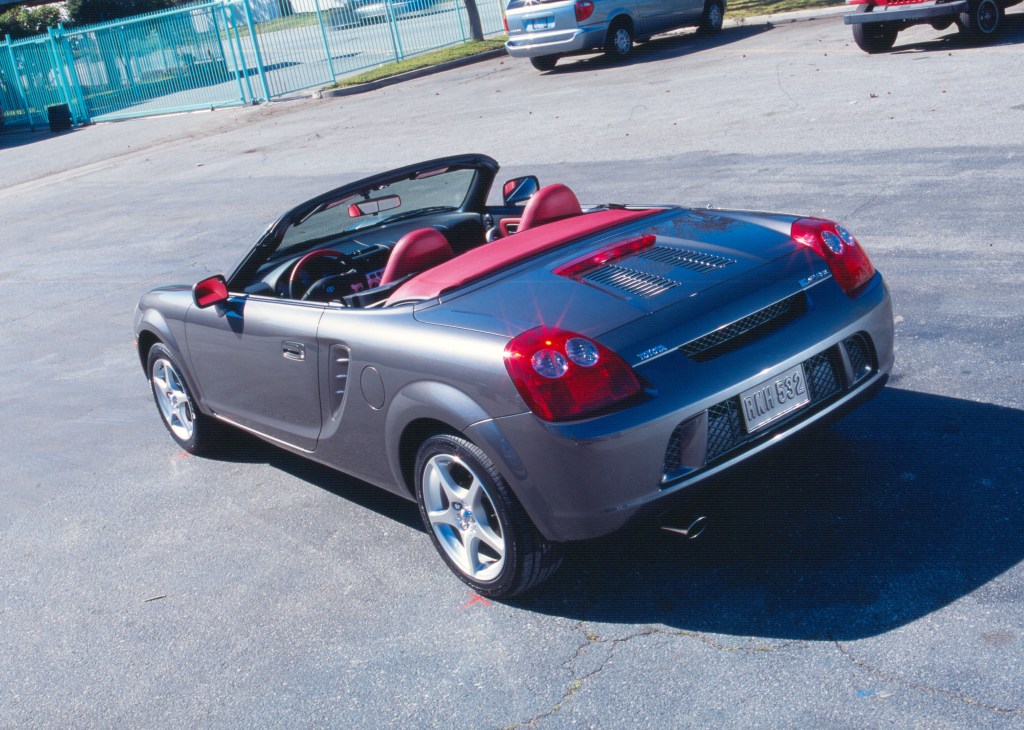
By the late 90s, America’s obsession with SUVs was already in full swing. Despite changing consumer tastes, sales of premium roadsters like the Porsche Boxster, BMW Z3, and Mercedes SLK230 Kompressor thrived because they effectively created the $35,000 to $45,000 luxury roadster market. On the other hand, the poor MR2 Spyder tried to compete in a single-car market that was forged by one of the most successful and adored roadsters ever sold—the Mazda Miata. As spectacular as the MR2 Spyder was to drive, it simply lacked the brand cachet and cult following that the MX-5 Miata had. In short, it was an uphill battle from the beginning.
It’s very sad that the MR2 Spyder didn’t achieve the same success that the Miata did, but there’s a silver lining—you can pick up a decent used Spyder for well under $10,000. That’s an excellent price for a rare mid-engine roadster that combines Toyota reliability with Lotus–lite performance.


